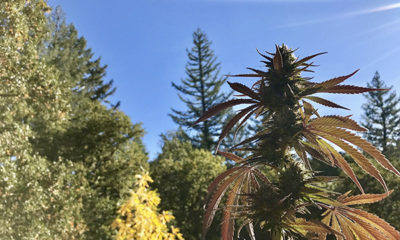
Joint Opinions
Why California Legalization Is More Unified than It Seems
California’s movement to legalize the adult use of cannabis in 2016 is both tremendously important and deeply divided. On the surface, the drive to legalize in the Golden State appears to look like a repeat of the failure of 2012, when multiple competing groups each fought separately to get on the ballot and none of them succeeded. The embarrassing failure to become the earliest medical marijuana pioneer allowed first Washington and Colorado – and now Alaska, Oregon and Washington, D.C. – to take the lead nationwide. However, a peek below the surface reveals a statewide legalization movement which isn’t actually as divided as it initially appears.
With no fewer than five separate legalization initiatives already filed for the 2016 ballot and a handful of wild card political groups, the situation appears to resemble a repeat of the 2012 debacle. Currently the list of active organizations include:
California Craft Cannabis Initiative
Written by attorneys Heather Burke and Omar Figuoera, it focuses on creating tiers of cannabis regulations that help small cannabis farmers and retailers compete against large corporate interests.
Compassionate and Sensible Access Act
A proposed constitutional amendment which would preclude the power of state or local governments to do basically anything to restrict the rights of patients to cultivate and use cannabis.
Marijuana Control, Legalization and Revenue Act of 2016 (MCLR)
Filed on the fortuitous date of April 20, MCLR has followed the same innovative approach to drafting its initiative as it followed in its failed bid to get on the ballot in 2014 – they allowed any resident to access and comment on the language of the initiative in an open Google Doc and then smoothed out the language with the help of a specialist attorney. The result is a proposal for a statewide regulatory scheme which should satisfy the latest federal enforcement priorities.
Responsible Use Act of 2016
Filed by apparent legalization newcomers Chad and Marinda Hanes, this act aims to legalize the use of cannabis for adults. Further details are awaiting statutory review by the state attorney general.
2016 California Bipartian Decriminalization of Cannabis Act
Submitted by two other apparent newcomers, Jason and Lara Collinsworth, this act would implement a law called “the CBD Cannabis Act” but would actually legalize both CBD- and THC-rich cannabis across the board for adults while preserving a separate medical system. It would provide for a 15 percent excise tax which cities and counties wouldn’t be allowed to increase and a few other innovative provisions.
California Cannabis and Hemp Initiative (CCHI)
Also known as the “Jack Herer initiative,” it has repeatedly failed to include remarkably liberal language on the ballot but remains a statewide force to be reckoned with nonetheless. The group appears to have quieted down considerably after their first campaign video provoked vociferous ridicule, but members of the group continue to show up at town halls and other campaign meetings to make their voices heard.
Reform California
Also known as the Coalition for Cannabis Policy Reform, can boast of having the largest coalition and most momentum behind it, having launched in the immediate wake of the failed bid to pass the moderate legalization initiative Proposition 19 in 2010. The group has not yet finalized its initiative language but will release it after completing a “listening tour” of town hall meetings around the state.
Blue Ribbon Commission
While not an initiative campaign per se, called by Lieutenant Governor Gavin Newsom nonetheless exerts a major influence on the legalization field. He is widely expected to succeed his erstwhile boss Jerry Brown as the state’s governor. Newsom thus can exert an outsized influence on the state’s legalization regime, and appears to be using it cautiously to build toward a workable policy.
The sheer quantity of groups makes for grim reading for any activist still smarting from fractious 2012.
“Voters tend to be averse to competing initiatives on similar subjects,” notes Dale Gieringer, director of California NORML. “It could create a very confusing situation for the electorate.”
But, the situation isn’t as bad as it seems. Heather Burke and Omar Figuoera, the attorneys who filed the California Craft Cannabis Initiative, have indicated that their purpose in doing so was to gauge early public reaction to their initiative’s language and that they intend to ultimately support other initiatives (Figuoera has already signed on as a co-proponent of MCLR). Neither should the Blue Ribbon Commission be considered a competing initiative for purposes of tallying statewide unity; as a rising political star, Newsom would be wise to throw his support behind any initiative which has a good chance of victory at the ballot.
It should also be remembered that most of the competing initiatives will probably fail to make the 2016 ballot because of the prohibitive cost of running an initiative campaign in the most populous state in the nation – a cost CCHI knows quite well. Going wisdom prices the cost of qualifying an initiative for the California ballot between $1-2 million, and for a proposed constitutional amendment like the Compassionate and Sensible Act, the higher signature count threshold makes the task even more daunting, as Gieringer notes. So it’s unlikely that every initiative vying for the 2016 ballot will make it.
Perhaps the most salient fact masking the broader unity of the California movement has been the relative silence of the most well-organized group, Reform California. The mega-coalition, which includes heavy hitters like the Drug Policy Alliance, the Marijuana Policy Project and California NAACP as well as local grassroots organizations like the United Food and Commercial Worker’s union and the Emerald Grower’s Association, has been devoting the majority of its energy into listening to the concerns of activists from other groups, according to chairwoman Dale Sky Jones.
“We’ve had fantastic discussions with MCLR,” says Jones. “We need more.”
She reveals the reasons why the more radical grassroots campaigns like CCHI, who have often showed up at Reform California town halls to voice their views, exert a larger influence than their ballot record suggests.
“We need them,” Jones says, referring to CCHI. “They keep us all honest.” She concludes by relating a story from a recent meeting in ultra-liberal Santa Cruz, held as part of Reform California’s listening tour. “So many people showed up who had disrupted our meetings in the past, but it turned into one of the most productive meetings we’ve had in a while.”
One critic who had been especially vocal in the past actually thanked Jones for committing to transparency in the initiative process. If CCHI failed to make the 2016 ballot, he pledged, he would support Reform California.
Do you think California will legalize cannabis in 2016? Tell us why or why not in the comments.
























